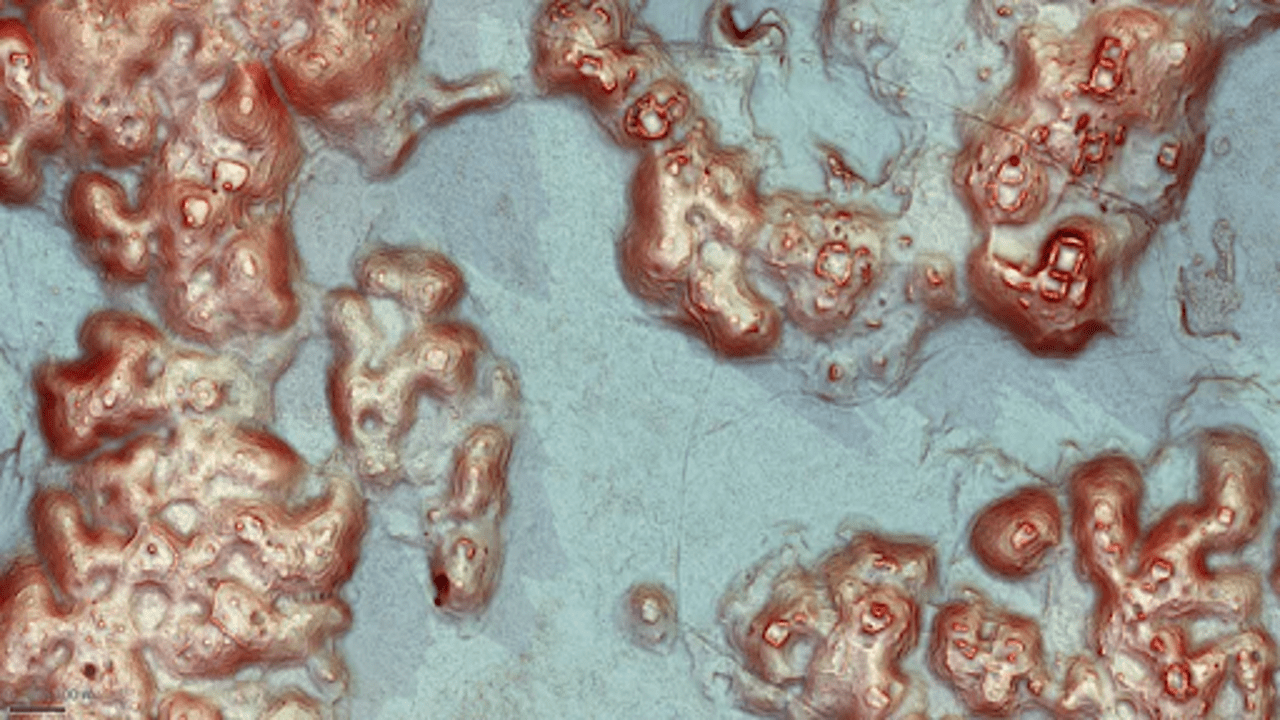
NASA's Perseverance rover has discovered a rock featuring unusual green spots, which could provide insights into the history of water on Mars. The green spots are visible in the upper left of the image. Live Science
NASA's Perseverance rover is nearing the four-year mark on its mission to explore Mars, focusing on ancient landscapes and collecting samples to uncover whether life may have existed on the planet. Perseverance is particularly interested in understanding the potential for microbial life in Mars' past.
Recently, the rover captured a stunning nighttime mosaic image of the Malgosa Crest abrasion patch, situated at a site known as the "Serpentine Rapids." Using its SHERLOC WATSON camera, Perseverance identified unusual white, black, and surprisingly greenish spots on the rocks. This unexpected discovery has generated excitement among scientists, who are eager to learn more about what other fascinating findings the rover might uncover in the future.
To take these images, Perseverance created an abrasion patch on a rock formation named "Wallace Butte." This patch is approximately five centimetres, or two inches, in diameter. The large green spot visible in the image measures around two millimetres, or 0.08 inches. This intriguing image was captured on August 19 during the 1,243rd Martian day of the Mars 2020 mission.
On Earth, the colours seen in the red Martian rocks often come from oxidized iron, which is the same compound that gives blood its red colour and creates rust on metal. The green spots identified in Perseverance's recent image also appear in red rocks on our planet. They form when liquid water seeps through sediment before it solidifies into rock. This process causes a chemical reaction that transforms oxidized iron into its reduced form, resulting in the green coloration of the rock.
In some cases, microbes can influence this transformation, but the decay of organic matter can also create favourable conditions for the reduction process. Additionally, interactions between sulphur and iron can initiate these reactions without the presence of microorganisms.
Despite the exciting nature of these findings, determining the specific type of reaction responsible for the green spots remains a challenge. Unfortunately, Perseverance was unable to place its SHERLOC and PIXL instruments directly over the green spot to conduct a closer analysis. Nevertheless, the rover's team is hopeful that future explorations will yield similar findings, allowing them to better understand the chemical processes responsible for these intriguing features.
Next on Perseverance's agenda is a journey to the rim of the Jezero Crater, which will require navigating through steep terrain. After spending two years in the crater, the rover is set to explore new areas and continue its mission to gather valuable data about the Martian environment.















